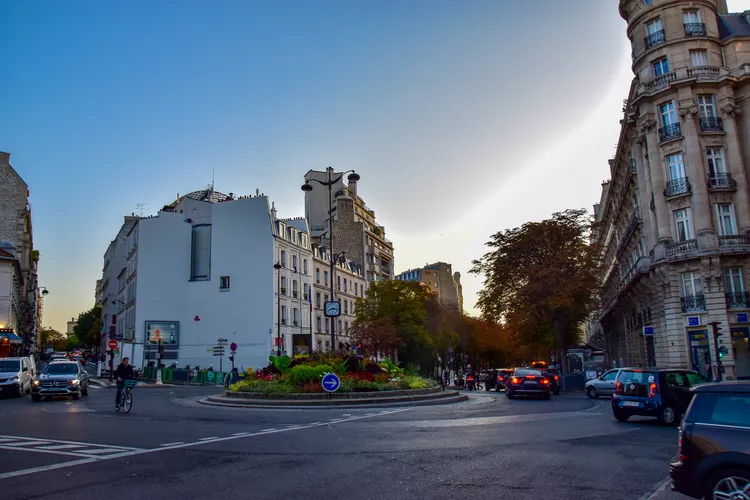Summary
Exploring the Charming Passy Neighborhood in Paris
With its stately 19th century Haussmanian buildings, wide, leafy avenues, and mostly upwardly mobile residents, the Passy neighborhood in the 16th arrondissement has become synonymous with chic. However, it also boasts cute, hidden alleyways, quiet yet fascinating museums that few ever bother to see, as well as top-rate yet unpretentious restaurants and fine boutiques. In short, it has a whiff of a Parisian village about it.
Comparable to New York’s Upper East Side, the neighborhood offers some of the city’s most reputable schools and contemporary arts museums. Furthermore, it hugs the western edge of the Seine River and is nearby one of Paris’s largest parks. Come here to see art exhibits, stroll through lavish gardens, or simply amble aimlessly in its leafy streets.
Orientation and Getting Around
The Passy neighborhood is situated on the western side of the city in the 16th arrondissement, just east of the residential suburb of Boulogne. To the north lies the 17th arrondissement, with the Seine River running along the eastern wall of the district, separating it from the 15th and 17th arrondissements.
Main Streets: Rue de Passy, Rue Raynouard, Avenue Victor Hugo, Avenue de Versailles, Avenue du Président Kennedy, Avenue Kléber, Avenue du Président Wilson
How to Get There: Stop at Alma-Marceau or Iéna on line 9 of the Paris Metro, or get off at Trocadéro or Passy on line 6 to explore the quieter side of the neighborhood along the main arteries of Rue de Passy and Rue Raynouard. Alternatively, take Line C of the RER commuter train to the Avenue du Président Kennedy or Boulainvilliers stations. Although it’s a bit of a walk to the area, it is perfectly easy with the assistance of a print or digital map.
:max_bytes(150000):strip_icc():format(webp)/TAM_2495-a47fa886529a4a3587a0f7085ebd4ac7.jpg)
Facts about Passy and Surrounds
- The 16th is the largest arrondissement in Paris in terms of land area. Moreover, it is the only district to contain two postal codes: 75016 and 75116. Despite this, its population density is lower compared to many other districts.
- The site for the Trocadéro Gardens is just across the Seine from the Eiffel Tower and once held a palace. Constructed for the World Fair in 1867, the Palais du Trocadéro boasted gardens and imposing statues of a rhinoceros and an elephant. It was later demolished in 1937 and transformed into the Palais de Chaillot (holding several museums) along with the elaborate Trocadéro gardens that remain today.
- Fans of American history will appreciate that Benjamin Franklin lived in the neighborhood for a time, printing tracts during the Revolutionary War period. A street in the area is named after him, in addition to celebrated residents such as the composer Claude Debussy and Giuseppe Verdi.
:max_bytes(150000):strip_icc():format(webp)/TAM_2606-cbafdc55d5fa4185bdb8111fd58442c7.jpg)
What to See and Do in and Around the Neighborhood
Maison de Balzac: This free museum is dedicated to the French novelist, Honoré de Balzac, who lived and worked in this charming house. Visitors can see the writer’s desk and explore the vast universe of his chef d’oeuvre, The Human Comedy.
Trocadéro Gardens: Across from the Eiffel Tower sit these magnificent gardens, featuring twelve fountains bursting water twelve meters high. Moreover, visitors can sit on the grass or admire the manicured greenery from the balcony above. The lawns are perfect for picnics, so stock up on some goodies at one of Paris’s best bakeries.
Palais de Tokyo: This superb museum, located just northeast of the Trocadéro Gardens, opened in 2002 and offers 22,000 square meters of quirky, avant-garde art. This is a favorite spot for international art students looking to soak up the local arts scene. Additionally, reserve time for the Modern Art Museum of the City of Paris, just next door, which also has superb collections available for free.
La Maison de Radio France: This massive cylindrical building, constructed in 1963 by Henry Bernard, houses seven French public radio stations and sits along the river on the right bank. While its museum of radio and television history has been closed since 2007, the building itself is an impressive sight of one of France’s major media institutions.
Bois de Boulogne: At over double the size of New York’s Central Park, this expansive green space is the perfect place to relax on a sunny afternoon. Inside the park are numerous attractions that adults and kids will likely enjoy, including two botanical gardens, lakes, an amusement park, and a zoo. In the summer, plays by Shakespeare and others are staged in the peaceful charm of the Shakespeare garden.
Shopping, Eating, and Drinking
Reciproque
101 rue de la Pompe
Tel: +33 (0)1 47 04 30 28
If you love second-hand shopping and top designer brands, you’ll be in heaven at this luxury consignment store in the 16th arrondissement. Its six aligning storefronts make it one of the largest in Paris, offering clothing and accessories from brands such as Dolce & Gabbana, Armani, Gucci, and Marc Jacobs at a fraction of the original price.
Noura Pavillon
21 avenue Marceau
Tel: + 33 (0)1 47 20 33 33
The Noura chain of Lebanese restaurants offers substantial portions of delicious food. Guests can enjoy bowls of creamy hummus, stuffed grape leaves, lemon-baked chicken, and lamb skewers that ensure satisfaction.
Le Vin dans les Voiles
8, rue Chapu
Tel: +33 (0)1 46 47 83 98
With good service, delectable dishes, and a delightful ambiance, this charming Parisian wine bar and restaurant offers fresh seasonal dishes paired with a broad selection of wines sourced directly from the owner’s estates.




